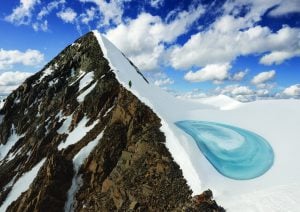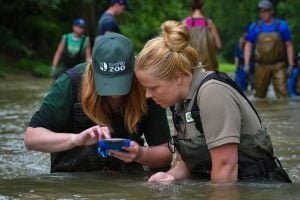
Environment
Why mountains matter in Canada
They sustain us, enrich our lives and inspire us
- 1287 words
- 6 minutes
Environment

The Canadian Rocky Mountains likely formed from an intense collision between B.C. and Alberta, new research suggests.
Researchers at the University of Alberta found evidence that the Canadian Rockies resulted from the inertia produced by an impact between the North American plate and a microcontinent encompassing B.C., most of the Yukon, and all of Alaska around 120 million years ago.
Until now, the accepted theory on the formation of the Canadian Rockies was the accretion model, which proposed that the mountains formed from a gradual accumulation of rock over time.
Jeffrey Gu, a professor of geophysics at the University of Alberta, says his team found a “suture” in the mantle underneath the Rockies — a feature not compatible with the accretion theory.
The researchers detected this boundary using seismic tomography, which models the subsurface of the ground by measuring the speed at which seismic waves travel through the lithosphere, which comprises the crust and the upper mantle. Gu compares it to how organs absorb X-rays, allowing doctors to see inside the human body, except in this case, the team was able to see inside the Earth.
“What we’re seeing is a very drastic change from slow [waves] in the west to very fast in the east,” says Gu. “This boundary zone between the slow and fast wave speed occurs more or less along the Rocky Mountain Trench.”
Stephen Johnston, chair of earth and atmospheric sciences at the university, says this discrepancy in wave speed suggests there are two different lithospheres on either side of the Rockies, since seismic waves travel faster in harder, denser rock.
“What we recognized,” says Johnston, “was that there was a very discrete boundary that separated crust that was clearly North American — continuous with the Canadian Shield that’s exposed to the north and east — and a different lithosphere to the west which had a different composition: warmer, more buoyant, and presumably younger than the Canadian Shield.”
Johnston says prior to the collision that formed the Rockies, this different lithosphere to the west was likely separated from the North American plate by an ocean basin.
“What happens when oceanic plates subduct is they give rise to volcanoes on the upper plate,” says Johnston. “And if you look at easternmost B.C., there are a set of granite intrusions and volcanic rocks that record subduction, starting around 120 million years ago and ending around 90 million years ago.”
Subduction is a geological process where one tectonic plate moves, or subducts, under another. Typically, oceanic plates — which are denser than continental plates — subduct under continental plates when the two collide.
As an example, Johnston points to the Himalayas, which formed from the closure of an ocean basin between India and Asia.
“We know that the ocean was subducting beneath Asia because all of the volcanic and igneous rocks are on the Asian side of the suture,” he says. “India moved towards, then got pulled into and under Asia.”
Johnston says that after the ocean basin between B.C. and Alberta closed, however, the story wasn’t over.
There is evidence that after the collision, the Rocky Mountains moved north — movement that may not even be finished today.
“There was actually an earthquake in the western Rockies just a month or two ago,” says Johnston. “That seems to be the last gasp of the mountain system moving north.”
According to Johnston, this movement is part of why the mountain range is still so impressive.
“If this system had formed 90 million years ago and just sat there, erosion would have made the mountains modest hills by now,” he says. “Instead, we still have a significant set of mountains and part of that is because we still have some mild seismicity right near the Alberta-B.C. border.”
Are you passionate about Canadian geography?
You can support Canadian Geographic in 3 ways:

Environment
They sustain us, enrich our lives and inspire us

Environment
David Boyd, a Canadian environmental lawyer and UN Special Rapporteur on Human Rights and the Environment, reveals how recognizing the human right to a healthy environment can spur positive action for the planet

Kids
The Canadian Geographic Challenge, now in its 20th anniversary year, will bring 20 young…

Environment
A new study finds zoos and aquariums in Canada are publishing more peer-reviewed research, but there is still more to be done